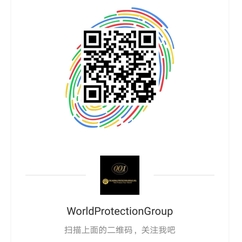Mastering Data-Driven Personalization in Email Campaigns: From Strategy to Execution
Implementing effective data-driven personalization in email marketing goes beyond basic segmentation and static content. It requires a comprehensive, technically nuanced approach that leverages detailed user data, advanced automation, and real-time updates to craft highly relevant, engaging messages at scale. This article provides a step-by-step, expert-level guide to transforming your email campaigns into precision-targeted communication engines, ensuring maximum engagement and ROI.
Table of Contents
- Understanding the Data Requirements for Personalization in Email Campaigns
- Segmenting Audiences for Precise Personalization
- Designing Personalization Logic and Rules
- Technical Implementation of Data-Driven Personalization
- Crafting Personalized Content at Scale
- Addressing Common Challenges and Pitfalls
- Case Study: Step-by-Step Implementation of a Personalization Workflow
- Reinforcing the Broader Value and Next Steps
1. Understanding the Data Requirements for Personalization in Email Campaigns
a) Identifying Key Data Points for Personalization
Effective personalization begins with pinpointing the most impactful data points. These include:
- Behavioral Data: Website visits, clickstream data, email opens, time spent on pages, cart abandonment events.
- Demographic Data: Age, gender, location, language preferences, device type.
- Purchase History: Past transactions, frequency, average order value, product categories bought.
- Customer Lifecycle Stage: New lead, active customer, lapsed user, VIP.
Prioritize real-time behavioral signals over static demographics when possible, as they provide more timely context for personalization.
b) Setting Up Data Collection Infrastructure
Implement a robust data collection framework:
- CRM Integration: Connect your Customer Relationship Management system with your ESP using APIs or native integrations to sync customer profiles continuously.
- Tracking Pixels & Tags: Deploy email and website tracking pixels to capture engagement and behavior data in real-time.
- Form Data & Surveys: Use dynamic forms to gather explicit preferences and update user profiles accordingly.
Leverage event-driven data pipelines, such as Kafka or AWS Kinesis, for real-time data ingestion if your scale demands it.
c) Ensuring Data Privacy and Compliance
Adopt strict compliance protocols:
- GDPR & CCPA: Obtain explicit consent, provide clear data usage disclosures, and include easy opt-out options.
- Data Minimization: Collect only what is necessary for personalization; avoid over-collecting sensitive data.
- Secure Storage & Access Controls: Encrypt sensitive data at rest and in transit; restrict access to authorized personnel.
2. Segmenting Audiences for Precise Personalization
a) Creating Dynamic Segments Based on User Behavior and Attributes
Use advanced segmentation techniques:
- Behavior-Based Segments: Segment users who recently viewed specific products, abandoned carts, or opened emails in the last 7 days.
- Attribute-Based Segments: Group users by location, device, or membership tier.
- Lifecycle Stages: Differentiate new users from long-term customers for tailored messaging.
Implement dynamic segments in your ESP that automatically update as user data changes, avoiding static list segmentation pitfalls.
b) Using Real-Time Data to Adjust Segments Before Sending
Integrate real-time data streams with your ESP to:
- Recompute segments: For example, if a user adds a product to cart moments before send time, include them in a high-intent segment.
- Trigger event-based segments: Such as sending a re-engagement email immediately after a user’s inactivity exceeds 30 days.
Use APIs like Segment or mParticle to sync real-time user data with your ESP for dynamic segmentation.
c) Automating Segment Updates with Marketing Automation Tools
Leverage automation platforms such as HubSpot, Marketo, or Salesforce Pardot to:
- Set up workflows: For example, automatically move users to a VIP segment after X purchases or Y spend amount.
- Use triggers: For real-time updates based on user actions, such as browsing behavior or purchase completion.
3. Designing Personalization Logic and Rules
a) Developing Conditional Content Blocks (if-then logic) in Email Templates
Use your ESP’s dynamic content features, such as AMPscript, Liquid, or custom code, to implement conditional blocks:
| Condition | Content Variation |
|---|---|
| If user purchased in last 30 days | Show new arrivals related to previous purchases |
| If user is a first-time visitor | Offer a welcome discount code |
Implement nested conditions for more granular control, e.g., combining behavior and demographics for targeted messaging.
b) Prioritizing User Data for Content Personalization
Decide on a hierarchy of data sources to determine which to use when conflicts arise:
- Recent behavioral data takes precedence over static demographics for timely relevance.
- Purchase history outweighs browsing data for product recommendations.
- Customer lifecycle stage influences tone and offers more than individual data points.
c) Incorporating Personalization Variables
Use personalization tokens in your templates:
- First Name:
{{ first_name }} - Location:
{{ location }} - Product Recommendations: Integrate with recommendation APIs to fetch personalized product lists.
Expert Tip: Use dynamic variables within conditional blocks to tailor content further, e.g., “Hi {{ first_name }}, we thought you’d love these in {{ location }}.”
4. Technical Implementation of Data-Driven Personalization
a) Using ESP Features for Dynamic Content
Leverage your ESP’s built-in features:
- AMP for Email: Implement interactive, real-time updating components within your email.
- Liquid Templates: Use conditional tags like {% if user.purchases %} to serve dynamic content based on variables.
Test these features thoroughly across email clients to prevent rendering issues.
b) Integrating External Personalization Engines or APIs
Connect external recommendation systems via APIs:
| API Endpoint | Use Case |
|---|---|
| https://api.recommendation.com/v1/get-products | Fetch personalized product lists based on user behavior |
| https://api.userdata.com/v1/profile | Retrieve comprehensive user profile data for segmentation |
Secure API calls with OAuth tokens or API keys, and cache responses where possible to reduce latency.
c) Setting Up Data Feeds and Synchronization
Ensure real-time updates by:
- Using Webhooks: Trigger data syncs immediately upon user actions or events.
- Scheduled Data Pulls: For less time-sensitive data, set up nightly or hourly syncs.
- Data Validation: Implement validation scripts to check for inconsistencies or missing data before syncing.
5. Crafting Personalized Content at Scale
a) Developing Modular Content Components for Dynamic Assembly
Design email templates with reusable, modular blocks:
- Header Blocks: Personalized greetings or loyalty badges.
- Product Showcases: Dynamic product carousels generated via recommendation APIs.
- Call-to-Action (CTA): Context-aware CTAs based on user intent.
Use server-side rendering or ESP-specific dynamic content features to assemble emails on the fly before send time.
b) Leveraging Machine Learning to Automate Content Personalization
Integrate ML models that analyze user data to:
- Predict user preferences: Using clustering and classification algorithms.
- Generate product recommendations: Via collaborative filtering or content-based filtering systems.
- Optimize send times: Using time-series models to identify when users are most likely to open emails.
Pro Tip: Utilize platforms like TensorFlow or scikit-learn integrated with your data pipeline for in-house






Leave a Reply
Want to join the discussion?Feel free to contribute!